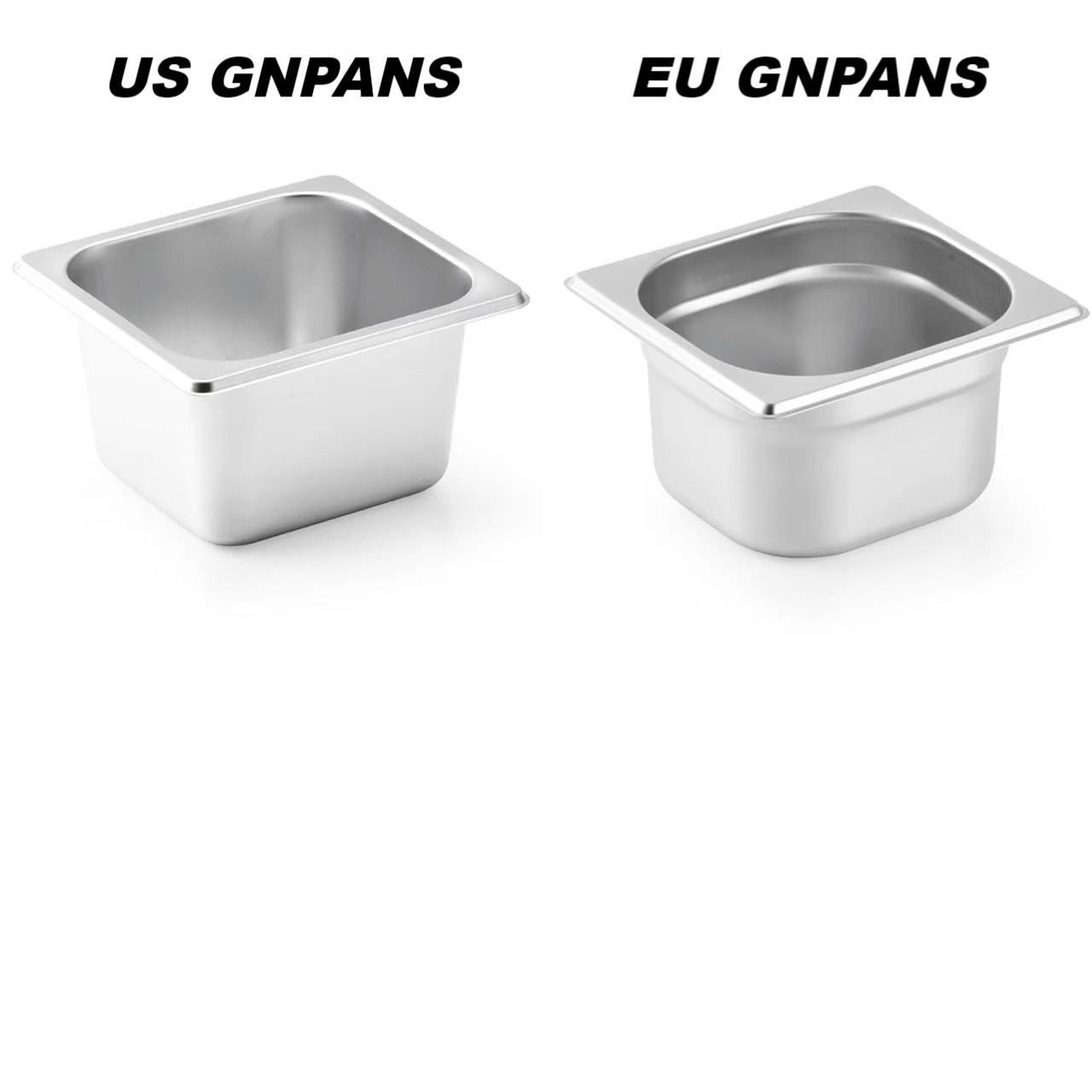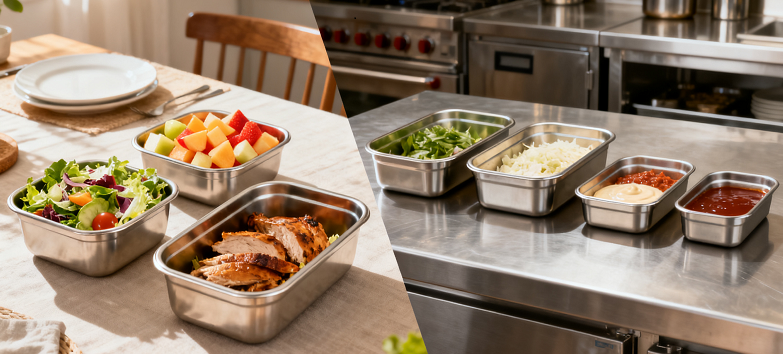GN Pans: Commercial Use vs. Home Use Differences
Time:
2025/10/28
GN Pans: Core Differences Between Commercial and Home Use & Practical Guide
In the field of catering equipment, Gastronorm Pans (referred to as GN Pans for short) have become practical utensils connecting commercial kitchens and home cooking due to their standardized design. However, there are significant differences in design logic and performance between commercial and home-use models. Only by clarifying these differences can their value be fully utilized.
I. Core Differences Between Commercial and Home-Use GN Pans
1. Materials and Craftsmanship
Commercial models: Aimed at "durability", the mainstream material is 304 food-grade stainless steel. With a thickness of 0.8-1.2mm, they are resistant to residue and impact.
Home-use models: Focus on "lightweight" and "cost-effectiveness", mostly made of 201 stainless steel or thickened aluminum alloy, with a thickness of 0.5-0.7mm. Entry-level models use food-grade coatings to enhance non-stick performance.
2. Specifications and Compatibility
Commercial models: Strictly comply with the international GN standard, with the 1/1 model (530×325mm) as the benchmark, deriving more than ten specifications such as 1/2 and 1/3. They are compatible with commercial equipment like refrigerators and heat preservation tables, and can also be used for batch processing in steam ovens and ovens.
Home-use models: Mainly small sizes such as 1/4 and 1/6, with a few 1/2 models. Their sizes are compatible with home refrigerators and ovens, and they can be used in microwaves.

II. Scenario-Based Usage Suggestions for GN Pans
1. Commercial Scenarios
Specification matching: Choose GN specifications in Europe and American specifications in North America. Use small to medium specifications like 1/3 and 1/4 for buffet tables to facilitate refilling and reduce waste; use large specifications like 1/1 and 1/2 for kitchen storage to improve space utilization.
Material selection: Use 201 stainless steel in ordinary environments; select 304 stainless steel when in contact with acidic ingredients or when using a dishwasher.
2. Home Scenarios
Size selection: For singles or small families, use small specifications such as 1/6 and 1/4 to store sauces and leftovers; for families of three, match the 1/3 specification to store semi-finished products and the 1/2 specification to prepare dishes for gatherings. Before purchasing, measure the width of refrigerator shelves and the size of the oven.

III. Purchasing Decision
Commercial users: (catering practitioners, baking studios, etc.): Prioritize commercial models made of 304 stainless steel and conforming to GN standards, with a thickness of no less than 0.8mm. Determine the size based on the equipment.
Home users: Choose basic models made of 201 stainless steel or aluminum alloy for cost-effectiveness; select 304 stainless steel models for better health and durability (especially for families with ovens and steamers).

If you have any questions about the selection of GN Pans (such as the need for customized models with special functions) or require inquiries for bulk purchases, please feel free to contact us. Our professional team will provide one-on-one product recommendations and technical support based on your specific scenarios, helping you efficiently solve needs such as storage and meal preparation, and making Gastronorm pans truly a practical tool to improve kitchen efficiency.
Related News
Contact Us
Room 201, 1st Street, International Trade Center, Xintang Town, Zengcheng District, Guangzhou, China








